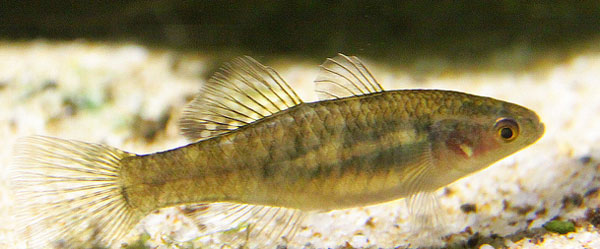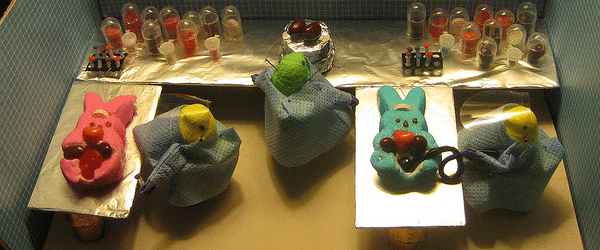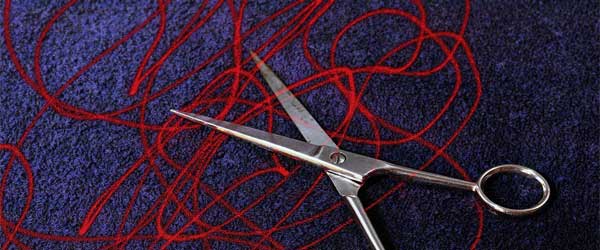Do you work with plants? Are they genetically engineered? Do you know where and how? If not, you could experience problems. After all you do not want your transgenic gene cassette to disrupt genes that would affect your phenotype of interest. In this article I will tell you about Agrobacterium-mediated transformation – a widely used method for creating transgenic plants – and how genome walking can identify where your Agrobacterium-mediated insertions are located.
Agrobacterium-Mediated Transformation
Agrobacterium-mediated transformation is a common approach for generating transgenic plants. This method works by piggybacking on Agrobacterium’s natural mechanism of inserting T-DNA (Transfer DNA; ~ 20kb) into the host genome. Doing so plant molecular biologists can now stably introduce any gene they want into their desired plant genetic backgrounds. But there is a problem: It is not really clear where these transgenic constructs are inserted in the genome.
So why is this a problem? Imagine if your transgenic construct is inserted into a gene that strongly impacts the phenotype you are studying. Not a pretty thought. And this is where genome walking can come to the rescue.
Genome Walking
Genome walking permits researchers to “walk” the genome from previously determined start points – such as from your gene-of-interest. This would be within the transgenic cassette that was introduced into your plant’s genome by Agrobacterium-mediated transformation. Genome walking works by using these start points as templates for primer design, and a series of innovative PCR steps. This makes genome walking a good method for determining where your insert is.
I have successfully used a genome walking approach several years ago to map the genomic location of an antisense construct that we had inserted into the Arabidopsis genome via Agrobacterium-mediated transformation. And you will like to know: The entire experiment took me and another grad student only a couple of weeks to finish; the only expense being a few PCR runs. This makes genome walking considerably cheaper and possibly faster than next-generation sequencing!
Requirements for Genome Walking
Clean and intact genomic DNA is an important requisite for this approach. The original CTAB-based DNA extraction procedure optimized for plant tissue has consistently worked better for me in terms of purity and yield compared to commercial DNA extraction kits. However, a few optimization steps should be considered when performing your extraction:
- You should consider selecting young leaves because they contain fewer polysaccharides and phenolics that can interfere with DNA extraction. Also try to select similarly sized leaves.
- At the DNA cleaning stage repeated phenol:choloform extractions may be necessary to better separate DNA from other extraction phases.
If you are interested in applying this approach to other plant species besides Arabidopsis, one critical aspect to address is the difference in tissue sampling. The rest of the protocol is reasonably universal. As long as there is a way to get large amounts of really high quality DNA, all plant enthusiasts in the lab are welcome to try this method out.
How to Perform Genome Walking
To carry out the experiments, I adapted various components of the GenomeWalker™ Universal kit from Clontech and an excellent protocol found online from Professor Jane Langdale’s lab at Oxford University. The Clontech kit comes with restriction enzymes that are designed for generating blunt ends to enable efficient adaptor ligation. But we modified this part of the protocol to choose enzymes based on our gene-of-interest in order to predict the size and frequency of restriction fragments.
Note: Selection of the most appropriate restriction enzymes plays a critical role in the nested PCR step described below. But for now, just keep in mind that you will need to select an enzyme that only cuts your gene-of-interest once, and also be aware of its predicted frequency of cutting your genome. The reason will become apparent as we move through the protocol.
The restriction digestion protocol itself is well explained in the above manual link. And there are several tips provided throughout the protocol to optimize virtually every step of the process if necessary. Suggestions are also provided on how to evaluate the quality of the various intermediates generated, such as the integrity of the genomic DNA. And digested DNA can be ready in as little as four hours depending on what restriction enzymes you decide to use.
After you have digested your DNA, is when the really cool part starts. Here are the steps to target and walk from your gene-of-interest:
Step 1. Ligation.
First you need to ligate the chopped up genomic DNA from the restriction digestion reaction (from the GenomeWalker™ protocol) to a couple of specific GenomeWalker™ adaptors. These adaptors are approximately 30 bp DNA sequences that ligate to the blunt ends of your DNA. You will then use these ligation adaptors as templates for the reverse primer in the nested PCR reaction described below.
Step 2. PCR.
The number of different PCR runs needed for the entire genome walking procedure after your ligations are ready can quickly creep up. Therefore, manage your time and schedule the use of PCR machines if using shared equipment.
PCR #1.
In this step you will use your newly generated libraries of adaptor-ligated DNA as templates for nested PCR, with two gene-specific primers and two adaptor-specific primers that bind to the adaptor-ligated ends of the restriction fragments. The goal of this first PCR reaction is to amplify a chunk of the genome that contains your gene-of-interest.
Nested PCR/PCR #2.
Nested PCR is just a fancy way of saying “doing a PCR reaction on the amplicon of an earlier PCR reaction” or “a PCR within a PCR”. This second nested PCR will now work to narrow down your specific region by using a pair of gene-specific and adaptor-specific primers.
Step 3. Fragment Analysis
The resulting PCR products should contain the ligated adaptor as well as your gene-of-interest. And since you know the sequence of your gene-of-interest and where you cut during the restriction digestion you can predict your amplicon’s length. For an example go ahead and check out this paper by Arsalan Daudi et al.
Step 4. Sequencing.
Based on the fragment analysis above, you should only see a few different types of PCR bands in your gels. This is because the correct fragments will contain the segment of the adaptor (where the reverse primer bound), the unknown genomic region surrounding your gene-of-interest and the segment of your gene-of-interest. You can then purify and sequence the PCR products that roughly fit the predicted amplicon size that contains these three DNA segments. Good ol’ fashion Sanger sequencing will validate that your gene-of-interest is actually there, and that the remaining sequence is indeed genomic DNA and not a PCR artifact.
Although we used this genome walking method for mapping Agrobacterium-transformed transgenic constructs inserted into the host genome, this approach could also be optimized to identify promoters, intron-exon boundaries and other types of specific DNA regions contained within uncharacterized or minimally characterized genes.
Summary
Having access to a relatively cheap, quick and easy strategy to identify unknown genomic regions can be quite handy if you are trying to shorten your list of samples destined for whole genome sequencing. It is also a great training exercise for undergraduate or graduate students, because the procedure is complex enough to warrant a few weeks of grappling with multiple PCR applications and how to make genetic constructs. Genome walking is a great addition to any molecular biologist’s protocol list!
Arsalan Daudi






